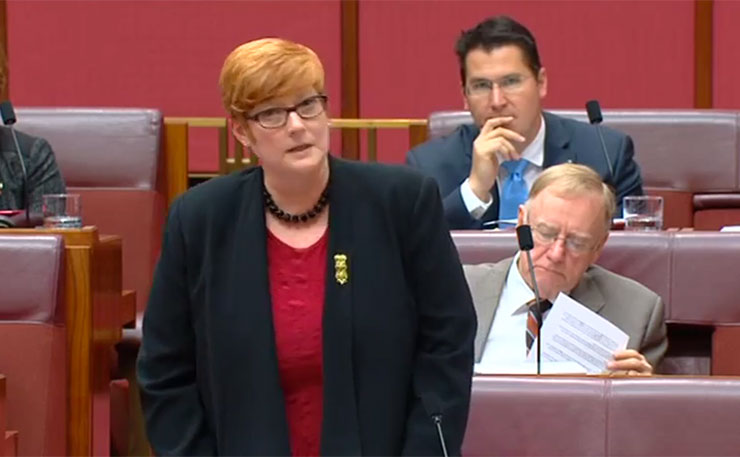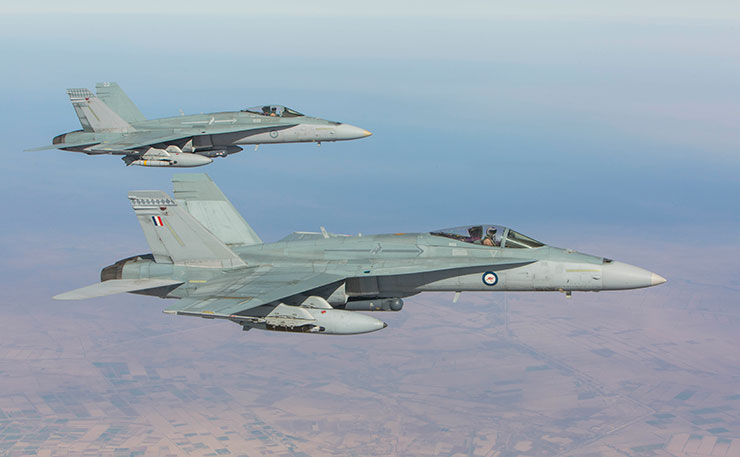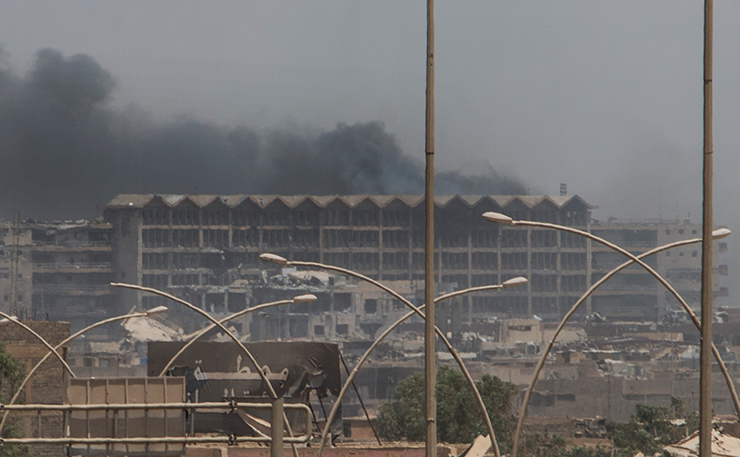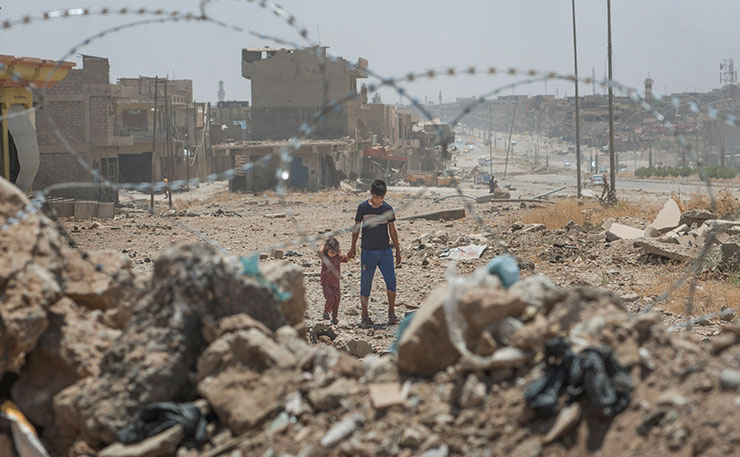Australia’s lack of ‘involvement’ in an Iraq airstrike that killed several hundred civilians should provide little comfort, writes Kellie Tranter.
Earlier this year, an Allied airstrike on the on the Jadida neighbourhood in Mosul, Iraq on March 17 killed as many as 200 civillians.
Shortly after, our Defence Minister Marise Payne was asked about Australian involvement.
Payne responded that our combat planes were “not involved in the airstrike in question”.
Carefully chosen words? Even if the Australian Defence Force was not involved in “the airstrike in question”, FOI documents have since confirmed that our combat planes were in the air and were dropping bombs in Mosul that day.
In fact, Mission Reports – compiled after Australian aircraft complete a mission – confirm that our combat planes were in the air and dropping bombs on Mosul on March 7, 11, 16, 17, 18, 21 and 22 March 2017.
The heavily redacted FOI documents refer to the bombs being dropped as ‘GBU’. Any further references or details are withheld, so it’s impossible to determine the precise capabilities of the bombs that Australia has been dropping on the people of Iraq.

We do know that in April 2016, the US State Department approved the sale of 2,950 GBU-39/B Small Diameter Bombs and associated equipment, training and support to Australia.
The deal had a total overall estimated value of $386 million.
As a matter of interest, that’s a little over $130,000 for each bomb.
For the uninitiated, the GBU-39/B Small Diameter Bomb (SDB) is peddled as an “extended range all-weather, day or night 250-pound class, guided munition. The SDB relies on the Global Positioning System to provide navigation to the target. Additionally, its small size allows increased aircraft loadout to achieve multiple kills per sortie and inherently reduces the probability of collateral damage”.
That’s provided, of course, that potential ‘collateral damage’, including people, are located outside the blast zone.
Yet airstrikes in the Jadida neighbourhood in Mosul place civilians in the middle of the blast zone.
Following the catastrophic airstrike on 17 March, the United Nations said publicly that “ISIL’s strategy of using children, men and women to shield themselves from attack is cowardly and disgraceful. It breaches the most basic standards of human dignity and morality. Under international humanitarian law, the use of human shields amounts to a war crime.”
“The conduct of airstrikes on ISIL locations in such an environment, particularly given the clear indications that ISIL is using large numbers of civilians as human shields at such locations, may potentially have a lethal and disproportionate impact on civilians.”

News reports quote Jadida residents referring to three homes that had taken direct hits from airstrikes, others that had been damaged by debris and shelling, and other buildings and houses that were bombed with ISIS forces and/or snipers being on the rooftops.
Australian Mission Reports describe the targets as ‘BLDG’ or ‘SNIPER IN BLDG’, with bombs noted to go ‘high order’, which is to say complete burning or initiative of the explosive occurs at its maximum velocity.
After the Jadida airstrike, the Australian Defence Force issued a statement noting that “while there are no specific allegations against Australian aircraft, Australia will fully support the coalition-led (Operation Inherent Resolve) investigation into these allegations”.
This may well be true, but given their guidance by GPS coordinates, the ADF must know with a very high degree of specificity the other targets our bombs have hit, and exactly when they hit.
In response to the FOI request the Department of Defence said no documents pertaining to “the outcomes of military and civilian casualties” or “describing, recording investigations of and assessing the circumstances of Australian involvement in civilian casualty incidents related to air strikes in the Mosul Jadida neighbourhood” were identified.

Even though the documents may not exist, how credible is it for our government to continue to maintain that we have avoided civilian casualties if we have participated in the bombing of populated areas where civilians are being used as human shields by ISIS, and bombed buildings with the object of killing snipers?
The carefully phrased exculpatory statement by the Defence Minister, when considered in light of the information available to ADF, gives the lie to any inference that Australian bombs have not caused civilian casualties.
Donate To New Matilda
New Matilda is a small, independent media outlet. We survive through reader contributions, and never losing a lawsuit. If you got something from this article, giving something back helps us to continue speaking truth to power. Every little bit counts.






